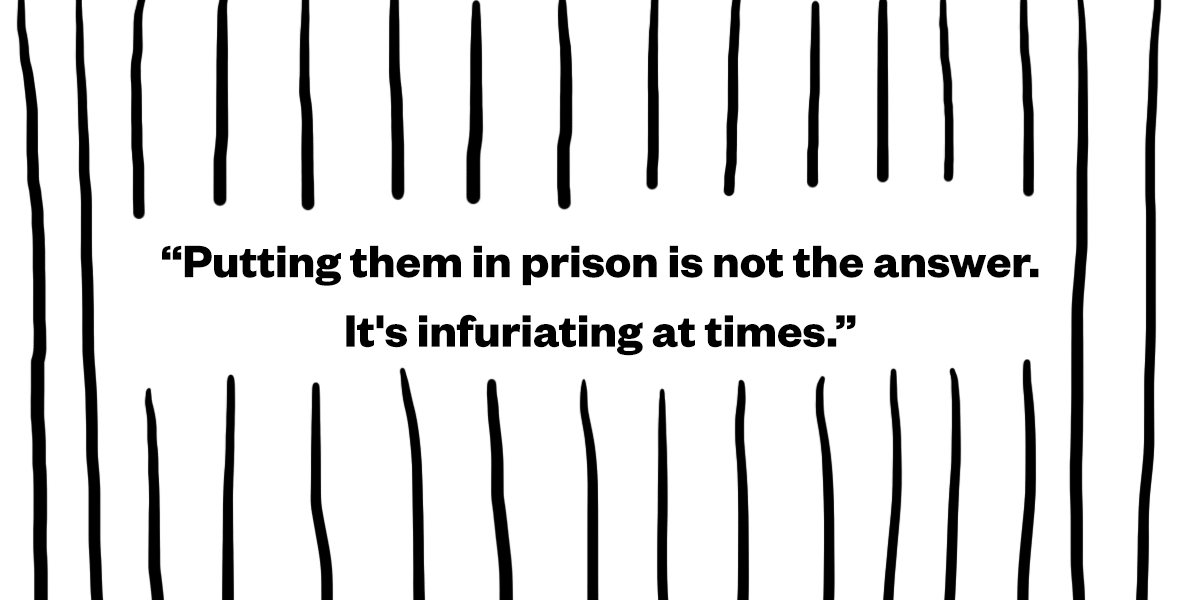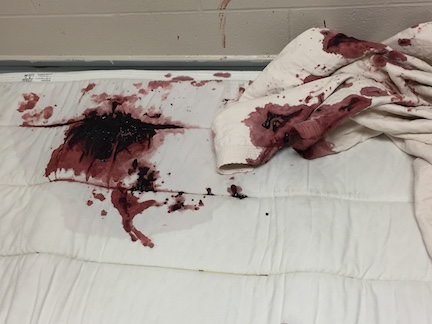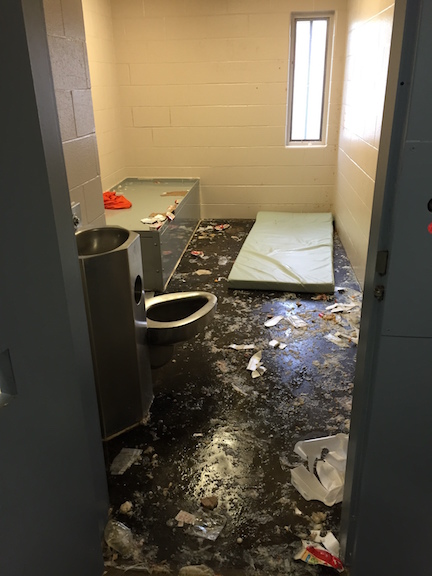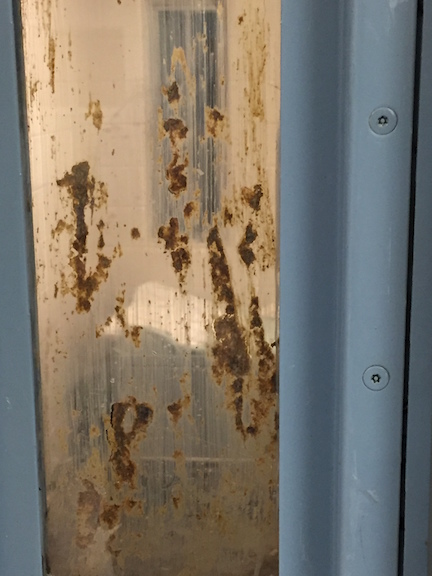The Ontario government is under fire to fix the province’s prisons.First came the Ottawa-Carleton Detention Centre, so overcrowded that inmates were being housed in showers. Then a revelation that 23-year-old Adam Capay had spent four years in solitary confinement while waiting for trial. Meanwhile, coroner’s inquests into jail deaths, like that of Christopher Coaster in 2008, continue to expose a host of other issues that are putting the health and safety of inmates and correctional officers in Ontario at risk.Under unprecedented public pressure, the government has appointed Howard Sapers, former correctional investigator of Canada and prominent critic of the prison system, to review the use of segregation in Ontario jails. On Wednesday, corrections minister David Orazietti told the Globe and Mail that he’d asked Premier Kathleen Wynne for more funding for prisons and that he’d sent a team of people to investigate conditions in segregation cells across the province.But the overuse of the practice is just the tip of the iceberg, say current and former correctional officers interviewed by VICE News.“Even when we’re just at capacity, it feels overcrowded.”That’s how Tom Kenny, a correctional officer, assessed the conditions at the smallest jail in the province. With just 25 beds, the Fort Francis jail isn’t designed to separate different types of inmates. For example, there isn’t a dedicated female unit. That means men who are in segregation, sometimes for their own protection, may be forced into the general population if a woman is admitted. Sometimes, women are kept in the jail’s coffee room, Kenny said, and intermittent offenders, who come in on weekends, have been housed in the administrative offices in the past.When there are more inmates than there are beds, mattresses are thrown onto the floors of the tiny cells. To allow their cell mates to use the bathroom at night, some inmates will move their mattresses and sleep under the beds, their faces inches away from the bottom of the bed frame.Because there’s only one segregation cell in the jail, and it’s located in the middle of a the cellblock, inmates who are in segregation are at arm’s length from the general population, Kenny said. “We’ve had guys in there who have gone crazy and set off the whole range, flipping out and trashing their range [a cell block] because another guy [in segregation] was pounding the walls and losing his mind.” said Kenny, adding that they’ve had to deploy tactical teams in these sorts of situations.A very small percentage of inmates are segregated for punitive reasons, said Kenny. More often, they ask to be segregated for their own safety or are placed in solitary confinement because their mental health issues make them prone to bullying and abuse from other inmates.“A lot of it can be blamed on a justice system that can incarcerate these people,” said Kenny. “I’ve seen it enough where the police will show up with someone like that and say, well, we’ve got nowhere else to put them.”Chris Jackel, who now serves as vice chair of the corrections division of the Ministry Employee Relations Committee, said staffing issues at the Central North Correctional Centre have frequently put the prison on lockdown because there aren’t enough correctional officers to respond, should there be an emergency.The prison has about 150 people working during the day, including programming staff. Jackel worked there for 10 years, and was a correctional officer for 22. Given that the jail has a capacity of 1,140 inmates, Jackel says staffing numbers need to be immediately increased.
“We’ve had guys in there who have gone crazy and set off the whole range, flipping out and trashing their range [a cell block] because another guy [in segregation] was pounding the walls and losing his mind.” said Kenny, adding that they’ve had to deploy tactical teams in these sorts of situations.A very small percentage of inmates are segregated for punitive reasons, said Kenny. More often, they ask to be segregated for their own safety or are placed in solitary confinement because their mental health issues make them prone to bullying and abuse from other inmates.“A lot of it can be blamed on a justice system that can incarcerate these people,” said Kenny. “I’ve seen it enough where the police will show up with someone like that and say, well, we’ve got nowhere else to put them.”Chris Jackel, who now serves as vice chair of the corrections division of the Ministry Employee Relations Committee, said staffing issues at the Central North Correctional Centre have frequently put the prison on lockdown because there aren’t enough correctional officers to respond, should there be an emergency.The prison has about 150 people working during the day, including programming staff. Jackel worked there for 10 years, and was a correctional officer for 22. Given that the jail has a capacity of 1,140 inmates, Jackel says staffing numbers need to be immediately increased. The Ontario government has committed to hiring 2,000 correctional officers over the next three years — 678 have already been hired. The problem, according to Jackel, is that these officers are being hired on fixed term contracts, with irregular hours, to help fill existing positions when officers are, for example, on vacation.“If we got an increase in full-time officers, that could increase the number of posts in our institutions per day,” he said.Jackel also said more social workers and addictions counsellors are needed at the jail — a demand echoed by many other correctional officers interviewed by VICE News. He has seen inmates cover themselves in their own feces, dump their meals into toilets, and use the toilet rim as a plate. He’s also witnessed them wash down medication with toilet water.“In segregation, every day, there’s someone displaying some sort of bizarre behaviour,” he said. “There’s millions of these little stories.”“When people talk about the overuse of segregation, absolutely, 100 percent. It’s overused because they’re not giving us any other tools,” said Lundy. “We need more staff.”Lundy said that when it comes to inmates that are being stuck in solitary confinement for administrative reasons, “we need to have an area where we can house them, where they have all the same privileges [as those in general population,” with officers to supervise them.At the Thunder Bay jail, and other bigger jails, overworked correctional officers have little interaction with inmates — mostly, they’re in contact once every half hour when officers do their rounds, said Lundy. “And inmates study us. They know when we come around for a round, so unless something happens, every half an hour, they do whatever they want.”
The Ontario government has committed to hiring 2,000 correctional officers over the next three years — 678 have already been hired. The problem, according to Jackel, is that these officers are being hired on fixed term contracts, with irregular hours, to help fill existing positions when officers are, for example, on vacation.“If we got an increase in full-time officers, that could increase the number of posts in our institutions per day,” he said.Jackel also said more social workers and addictions counsellors are needed at the jail — a demand echoed by many other correctional officers interviewed by VICE News. He has seen inmates cover themselves in their own feces, dump their meals into toilets, and use the toilet rim as a plate. He’s also witnessed them wash down medication with toilet water.“In segregation, every day, there’s someone displaying some sort of bizarre behaviour,” he said. “There’s millions of these little stories.”“When people talk about the overuse of segregation, absolutely, 100 percent. It’s overused because they’re not giving us any other tools,” said Lundy. “We need more staff.”Lundy said that when it comes to inmates that are being stuck in solitary confinement for administrative reasons, “we need to have an area where we can house them, where they have all the same privileges [as those in general population,” with officers to supervise them.At the Thunder Bay jail, and other bigger jails, overworked correctional officers have little interaction with inmates — mostly, they’re in contact once every half hour when officers do their rounds, said Lundy. “And inmates study us. They know when we come around for a round, so unless something happens, every half an hour, they do whatever they want.” Lundy said the corrections minister conducted a staffing analysis following a riot at the jail in December, and concluded that the facility was “in crisis.” But he said it refused to act until similar analyses were completed at every jail in the province.The ministry refused to provide copies of the staffing analyses to VICE News, saying they contain sensitive information pertaining to personnel matters that could affect institutional security.Lundy said the Thunder Bay jail also has a high rate of inmates on methadone, inmates with gang affiliations, and mentally ill offenders. A psychiatrist only comes in five times a month — not nearly enough to see everyone who needs help.“All this stuff is thrown at you without any change in the available resources,” he said, adding that some inmates who want to be in segregation manipulate the system by, for example, saying they will commit suicide, knowing the guards will have no choice but to put them in solitary confinement, even there isn’t enough space.“The ministry is far too reactive and not proactive,” he said. “We’re getting a perimeter fence probably within the next year, but only after someone escaped. We’re getting sally ports [secured doors] installed inside our jail but only because there was a riot.”Herbacz, like the others, said understaffing has ripple effects on inmates, who see less yard time and are sometimes sent into their cells for the night much earlier than usual, for example, and correctional officers, who end up having to deal with the consequences of increased tension inside the jail.“Inmates don’t have a lot to look forward to while they’re in jail, so when you’re cancelling their yard and can’t send them out for a smudge because there aren’t enough staff, it causes unrest,” said Herbacz, who has worked at the jail since 2005.
Lundy said the corrections minister conducted a staffing analysis following a riot at the jail in December, and concluded that the facility was “in crisis.” But he said it refused to act until similar analyses were completed at every jail in the province.The ministry refused to provide copies of the staffing analyses to VICE News, saying they contain sensitive information pertaining to personnel matters that could affect institutional security.Lundy said the Thunder Bay jail also has a high rate of inmates on methadone, inmates with gang affiliations, and mentally ill offenders. A psychiatrist only comes in five times a month — not nearly enough to see everyone who needs help.“All this stuff is thrown at you without any change in the available resources,” he said, adding that some inmates who want to be in segregation manipulate the system by, for example, saying they will commit suicide, knowing the guards will have no choice but to put them in solitary confinement, even there isn’t enough space.“The ministry is far too reactive and not proactive,” he said. “We’re getting a perimeter fence probably within the next year, but only after someone escaped. We’re getting sally ports [secured doors] installed inside our jail but only because there was a riot.”Herbacz, like the others, said understaffing has ripple effects on inmates, who see less yard time and are sometimes sent into their cells for the night much earlier than usual, for example, and correctional officers, who end up having to deal with the consequences of increased tension inside the jail.“Inmates don’t have a lot to look forward to while they’re in jail, so when you’re cancelling their yard and can’t send them out for a smudge because there aren’t enough staff, it causes unrest,” said Herbacz, who has worked at the jail since 2005. The ‘smudge’ that Herbacz mentioned refers to the Indigenous custom of burning sacred medicines, like sage, cedar, and sweetgrass as a form of ritual cleansing.Staffing issues are coupled with overcrowding — at one point, according to Herbacz, there were as many as 198 inmates at the prison, which is only meant to house up to 115. That meant up to 4 people living in a single cell. The jail is bursting at the seams, said Herbacz. He expects it to become even more packed once the cold weather hits. Much of that overcrowding, he said, is a result of a backlog in the justice system, resulting in inmates being stuck in pretrial custody for years at a time.“These people come in, we’re basically just housing them, the court is taking forever, they’re sitting on remand [in custody while waiting for trial or sentencing], sometimes years, and when they get out, they’ve got no tools to function in society, and they come right back to us,” said Herbacz. The lack of funding has hurt programming at the jail, meaning less workshops like resume writing or counselling programs like AA, he added.“I know a lot of the guys at the Kenora jail personally, I’ve basically raised them in the 15 years I’ve been here,” he said. “They spend more time in jail than they do outside.”What’s often ignored in stories about prisons is the impact on correctional officers themselves — stress and heavy verbal abuse breaks everyone down over time, said Bisaillon, who has been a correctional officer for 25 years.“What happens when you get verbally abused and harassed day after day because some inmates may consider that there’s really no consequences for them,” he said. “It’s one of the few jobs you work everyday where you get abused, and you’re told as a professional, you have to deal with that abuse, but I don’t think as human beings, we’re equipped to do that.”Fixing the system — providing mental health training to correctional officers that isn’t a “farce,” for example — will require some heavy investment that he isn’t sure they’ll see because “people in the political world don’t get a lot of capital out of doing things for inmates.”
The ‘smudge’ that Herbacz mentioned refers to the Indigenous custom of burning sacred medicines, like sage, cedar, and sweetgrass as a form of ritual cleansing.Staffing issues are coupled with overcrowding — at one point, according to Herbacz, there were as many as 198 inmates at the prison, which is only meant to house up to 115. That meant up to 4 people living in a single cell. The jail is bursting at the seams, said Herbacz. He expects it to become even more packed once the cold weather hits. Much of that overcrowding, he said, is a result of a backlog in the justice system, resulting in inmates being stuck in pretrial custody for years at a time.“These people come in, we’re basically just housing them, the court is taking forever, they’re sitting on remand [in custody while waiting for trial or sentencing], sometimes years, and when they get out, they’ve got no tools to function in society, and they come right back to us,” said Herbacz. The lack of funding has hurt programming at the jail, meaning less workshops like resume writing or counselling programs like AA, he added.“I know a lot of the guys at the Kenora jail personally, I’ve basically raised them in the 15 years I’ve been here,” he said. “They spend more time in jail than they do outside.”What’s often ignored in stories about prisons is the impact on correctional officers themselves — stress and heavy verbal abuse breaks everyone down over time, said Bisaillon, who has been a correctional officer for 25 years.“What happens when you get verbally abused and harassed day after day because some inmates may consider that there’s really no consequences for them,” he said. “It’s one of the few jobs you work everyday where you get abused, and you’re told as a professional, you have to deal with that abuse, but I don’t think as human beings, we’re equipped to do that.”Fixing the system — providing mental health training to correctional officers that isn’t a “farce,” for example — will require some heavy investment that he isn’t sure they’ll see because “people in the political world don’t get a lot of capital out of doing things for inmates.” The images from inside Central North Corrections Centre were posted to @CNCCLocal369, the jail union’s Twitter account.
The images from inside Central North Corrections Centre were posted to @CNCCLocal369, the jail union’s Twitter account.
Advertisement
Tom Kenny, Fort Francis Jail
Advertisement

Chris Jackel, Central North Correctional Centre (former)
Advertisement

Mike Lundy, Thunder Bay Jail
Advertisement

Advertisement
Paul Herbacz, Kenora Jail

Advertisement
Mike Bisaillon, North Bay Jail
